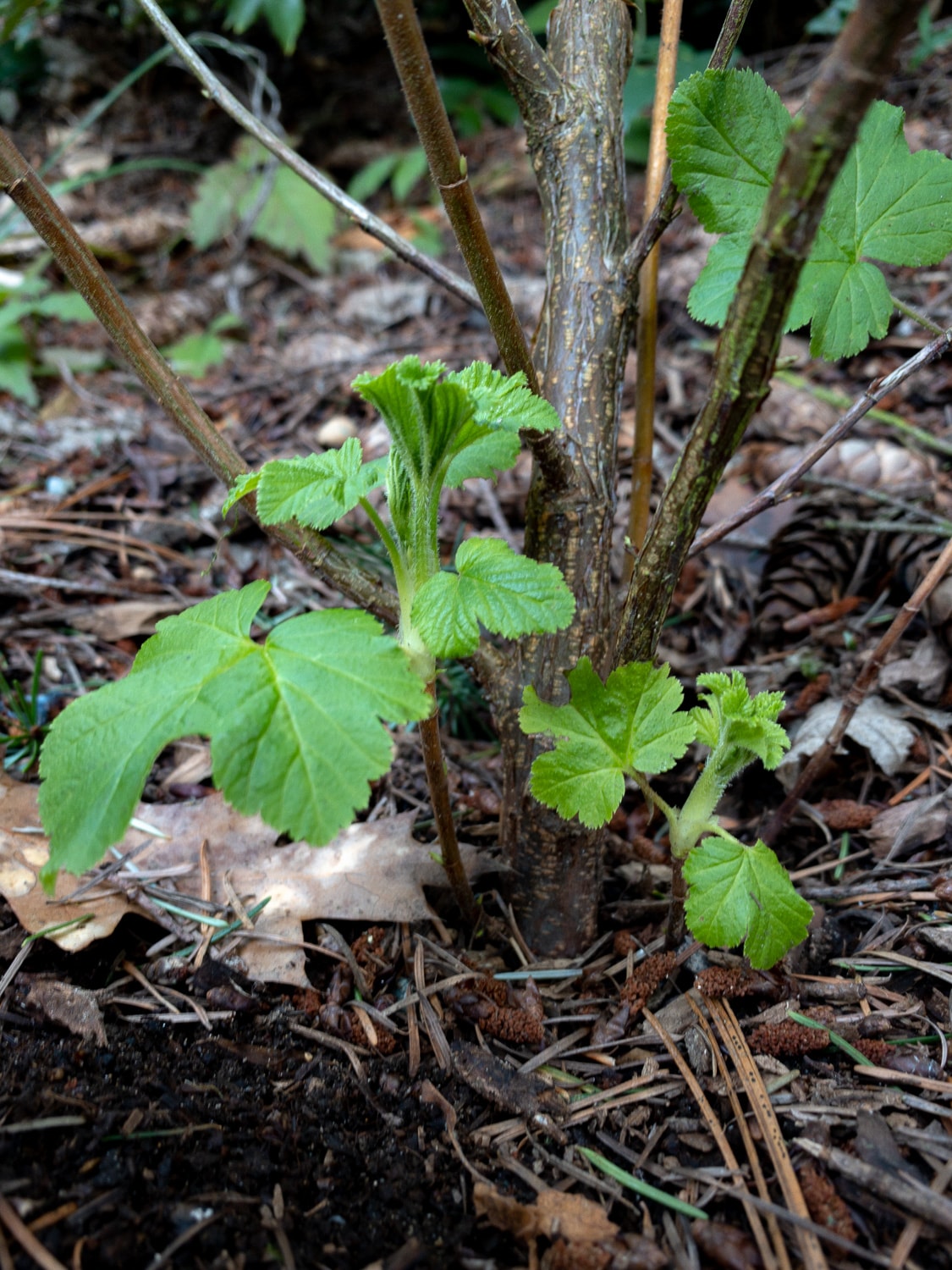
Friends to the east are buried under snow and ice. To the south, it’s sunny days and pollinators already at work. Here, the yard’s largest blood currant (Ribes sanguineum) is starting to leaf out. Last year, I was surprised to see how long it took some newly planted natives — serviceberry, oceanspray — to show any signs of life. I almost proclaimed the oceanspray dead, mid-spring. This year I’m happy to see something rearing to go.

At the beginning of the month, I noticed green buds along the stems and several leaves about to unfurl. These bright hits of green were easily seen from the kitchen window, almost too good to be true. Then we got a foot of snow, and I feared that January’s false spring had been punished.
Not so. Heavy rains quickly melted the snow and this currant continues toward spring. Two smaller blood currants (~18″) haven’t shown any life yet, but this particular plant has been a vigorous grower ever since I bought it last February. It was about 30″ high then, in a one-gallon container. It’s now standing 62″ — its three main stems doubled in length in one year. I don’t know how common this is, but The Gossler Guide to the Best Hardy Shrubs mentions that for their blood currants, they’ve seen “2–3 feet of growth on small plants.”
